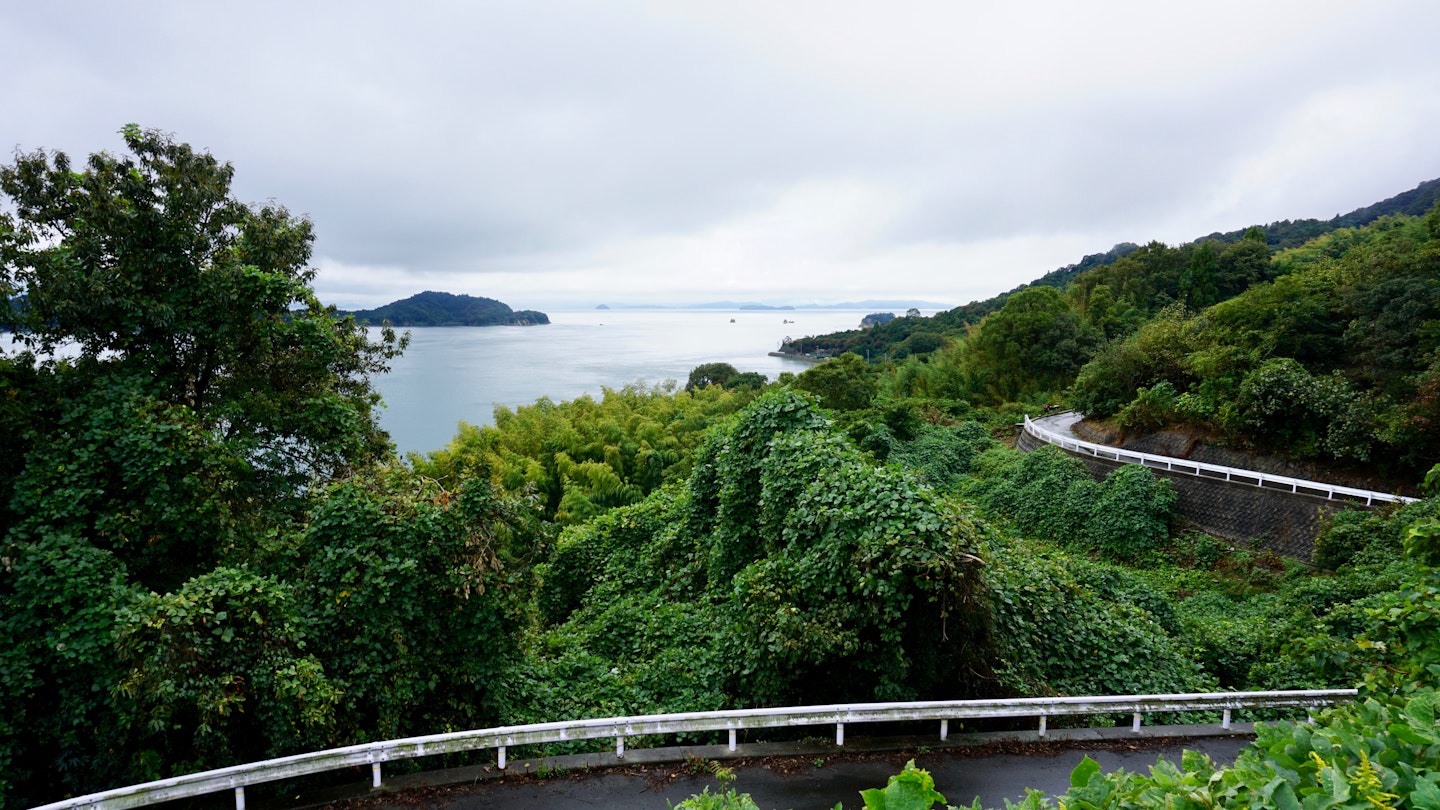Squeezed between Honshū, Shikoku, and Kyūshū, the Seto Inland Sea is alive with hundreds of charming emerald green isles, rising from the ever-present blue haze of the seascape. The islands of the Seto Inland Sea are renowned for their stunning beauty and are becoming notable destinations for contemporary art enthusiasts, particularly with the success of the Setouchi Triennale art festival.
Embrace the Adventure of Cycling
If you are looking for a more thrilling way to explore the region than cruising between islands by ferry, consider embarking on an island-hopping adventure by bike. The Shimanami Kaido spans 70 kilometers (43 miles) across six islands, linking Onomichi on Honshū to Imabari on Shikoku, and is perhaps Japan’s most famed cycling route. However, nearby lies a quieter, off-the-beaten-path option: the Tobishima Kaido.

Explore the Scenic Tobishima Kaido
The Tobishima Kaido spans 46 kilometers (29 miles) across the Aki Nada Islands—a stunning island chain in the Seto Inland Sea near Hiroshima Prefecture—by a series of seven bridges. Unlike the Shimanami Kaido, this route is less developed and features clearly marked blue-painted cycle lanes meandering along the coastline. With a mild climate and gentle topography, the islands are perfect for cycling. While the Shimanami Kaido is a bustling expressway, expect to see few cars on the Tobishima Kaido. Although you can complete the route in a few hours, it’s advisable to slow down and soak in the breathtaking coastal scenery, art, architecture, cultural heritage, and splendid beaches along the way.

Shimokamagari
Beginning from Kure in Hiroshima Prefecture, the 1,175-meter (3,850-foot)-long Akinada suspension bridge connects to the first island of the Aki Nada chain, Shimokamagari. Cyclists can rent bicycles at the JR Nigata Station in Kure or travel by bus, ferry, or foot to Shimokamagari to rent there (bicycles and pedestrians cross free). Despite linking to Honshū via the bridge, Shimokamagari feels worlds apart from the bustling modernity of Japan, primarily due to its fascinating history.
Visit Shotoen Garden and Museums to delve into the history of elite mariners from the Edo period, as this town was a pivotal port along the route to Edo (now Tokyo). Here, you can find a scroll portraying Korean envoys sailing through the Seto Inland Sea, inscribed on the UNESCO Memory of the World Register. Additionally, nearby attractions include an insect museum and the Rantokaku Art Museum, featuring works by notable Nihonga artists like Yokoyama Taikan.

Kamikamamagari
Cycling from Shimokamagari, you’ll cross the Kamagari bridge to the larger Kamikamagari island, known for its stunning sandy beaches—some of the finest in Hiroshima Prefecture. While lounging at Kenmin-no-Hama beach, take a moment to learn about the ancient 1,500-year-old method of salt harvesting. The technique, derived from boiling dried seaweed and seawater, was highlighted in a 1984 archaeological dig on the beach. A small factory continues to produce salt today, and visitors can participate in traditional salt-making workshops run by the Moshio-no-Kai organization, a process gaining popularity since its feature in the “Salt” episode of the Netflix series Salt, Fat, Acid, Heat.

Toyoshima
An enjoyable, breathtaking ride over the Toyoshima Bridge leads you to the small island of Toyoshima. Along the south coast, you’ll encounter vintage wooden structures and vibrant fishing boats, accompanied by expansive views of countless islands. Keep an eye out for the red-throated diver, the prefectural bird of Hiroshima, which nests in various locations on the island.
At this juncture, you might have built up an appetite; consider stopping for lunch. Marichan, located on the east side of the island just north of the Toyohama Bridge, is famous for serving okonomiyaki, while Shima Cafe Kitatani offers a delicious beef curry.

Osakishimojima
Next, cross the Toyohama Bridge to reach Osakishimojima. The southeastern corner of the island, Mitarai, is a historic heritage site with buildings dating back to the Taisho, Meiji, and Edo periods, creating an atmospheric glimpse into a bygone era.
Cyclists should pause at the Tenmangu Shrine in Mitarai to pay respects to Harukichu Nakamura, the first Japanese individual to cycle around the globe, who began his journey in 1872. He traveled extensively, navigating through various regions and surviving on limited resources, including an extraordinary encounter with a wolf.

Okamurajima
Your final island-hop takes you from Osakishimojima across three bridges to the small, uninhabited islands of Heirajima and Nakanoshima, reaching Okamurajima. From here, you may retrace your route or catch a ferry to Imabari on Shikoku (you can conveniently drop off your rental bike at the port; just be sure to check the timetables). For those with additional energy, you can also venture to Imabari and pick up the Shimanami Kaido route from there.




